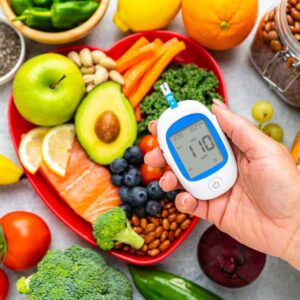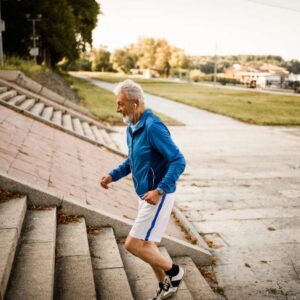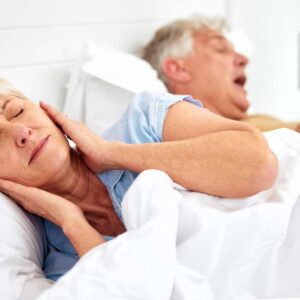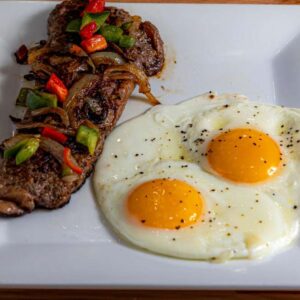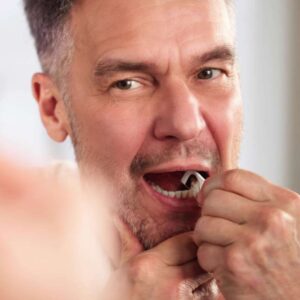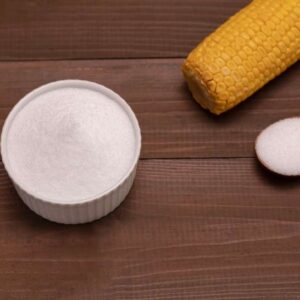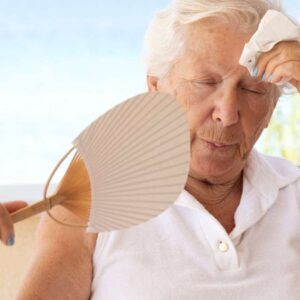
Michael Phelps' Pain Relief Secret Revealed
- Weird black and blue dots may be the secret to Olympic success
- Discover how this ancient therapy can relieve your muscle soreness and boost your overall well-being
- Find out how I got results without discomfort or bruising (photos).
Dear Living Well Daily Reader,
If you’ve watched only five minutes of Olympic coverage, then you’ve probably seen the dark purple circles that dot Michael Phelps’ body.
You know, the numerous large blemishes that mark his arms, shoulders and back. The ones that might make you think he got into a rumble at a Rio bar if they weren’t so perfectly round.

Phelps’ upper body covered in cupping marks during the 2016 Olympic Games. Source: Dailymail.co
But Phelps hasn’t gotten into any post-event barroom brawls (that we know of, anyway).
Instead, he’s secured his legacy as the most decorated Olympian of all time.
And the black and blue circles on his arms, back and shoulders are caused by an ancient Eastern medicine technique called cupping, which is used to treat a variety of conditions from muscle soreness to immune issues.
The real question is… does it work?
Since the use of cupping for pain relief goes back thousands of years to ancient Egyptian, Chinese and Middle Eastern medicine, it would make sense this therapy gets results.
So I decided to try it. I’ll tell you all about my cupping experience (photos included) in just a bit. First, let’s take a closer look at cupping.
![]() Ancient Therapy, Modern Results
Ancient Therapy, Modern Results
Traditional cupping therapy uses cups made of glass, earthenware or bamboo.
To get one of these traditional cups to stick, the therapist uses a flame inside the cup. This heat creates the suction needed for the therapy, sucking the skin and underlying tissue into the cup. The cups are placed on acupuncture points on the body.
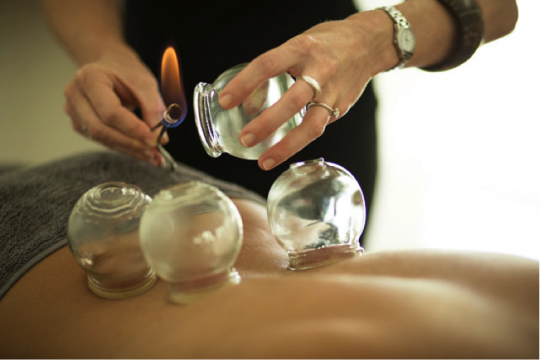
A therapist preparing a cup with fire. Source: The acupuncturecompany.com
However, this method doesn’t allow the practitioner to control the level of suction you will receive. For this reason, many practitioners and homes users alike prefer hand-pump cups (which I also opted for).
Cupping is often described as “a reverse massage.” In massage, the therapist applies pressure to sore areas to break down toxins and flush them from the muscles into the bloodstream. But in cupping, the suction brings the blood to areas that wouldn’t normally have it. This increased circulation stimulates acupuncture points, which in turn, help to detoxify and relax muscles through the release of connective tissue.
Dr. Ed Lamadrid, a sports acupuncturist, explains further:
Cupping is all about circulation — it brings blood to areas that don’t normally have it. It actually sucks the skin into the cup, releasing the connective tissue underneath the skin that wraps your muscles. Now the muscles are able to move freely without the restriction. As we get tense and tight, the connective tissue that wraps around every single muscle starts twisting, and that’s why you think something’s wrong… but nothing is wrong with your muscle. It’s the covering of the muscle that’s actually tightening up. You release that envelope and your muscle’s range of motion is improved.
According to a systematic review in Acupuncture in Medicine, “Cupping therapy is promising for pain control and improvement of quality of life.” Other studies have found cupping to have positive results on pain, but some of these attribute it to the placebo effect. Many experts agree that more research needs to be done on the health effects of cupping.
Some folks claim that cupping benefits aren’t limited to just muscle recovery. Traditionally, cupping’s been used to treat anything from arthritis to mental illness. In modern times, it’s being used for cellulite control, rejuvenation and immune system support as well.
Personally, I used cupping to relieve a long-standing pain in my shoulder.
![]() Cupping Results Don’t Suck
Cupping Results Don’t Suck
As I mentioned earlier, I used a hand-pump cup system. There were two reasons for this:
- It’s cheap. The going rate for a 30-minute cupping session here in Baltimore is $50, whereas the hand-pump kit (which includes 15 cups and the pump) costs $16, and I can use it repeatedly.
- I’m a tad afraid of fire, so the thought of an open flame being used near my bare skin is a little too much for me.
It took me a few tries to get the cups working, but once I got the hang of it — with the help of a extender tube — I was able to cup just about anywhere on my body. However, it’s much easier to have the help of a partner (which I eventually opted for) when attempting to cup any part on the back of the body.
I chose a particular spot on my left shoulder because it always hurts. Even with a regular stretching routine and frequent massage, this spot remains troublesome.
My friend placed the cup on the spot and used the hand pump to create a moderate amount of suction.
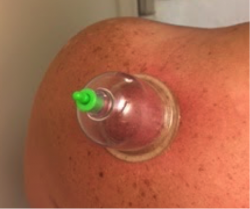
Initially, the suction felt a bit uncomfortable, but I quickly became accustomed to it. Around five minutes in, I began to feel tingling in the muscles around my shoulder, in my neck and down my arm. I experience the same sensation when getting deep tissue massage.
I left the cup on for 35 minutes. It was easy to remove and didn’t leave too much of a mark.
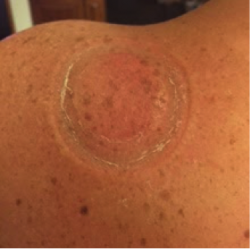
Incredibly, my shoulder felt less stiff and my range of motion increased instantly. After a night of rest, my shoulder pain was almost gone. I was amazed at how quickly the cupping had brought me relief. And the best part — I didn’t wake up with a giant bruise, just a bit of discoloration. This may be due to the moderate pressure and/or the short duration of the session.

From now on, I will be cupping this troublesome spot on my shoulder as well as other sore spots.
While cupping won’t get you (or me) into Olympic shape, it may relieve muscle soreness and boost your range of motion. It seems to work for Phelps, who brought home his 23rd gold medal this summer — extending his all-time gold medal record.
If you want to try cupping, you can buy the same set I used here.
Live well,

Natalie Moore
Managing editor, Living Well Daily
Sources
[2] Local massage therapist explains cupping
[3] Why Michael Phelps, other Olympic athletes use cupping therapy for recovery
[4] Effectiveness of cupping therapy for low back pain: a systematic review
Written By Natalie Moore
Natalie Moore is a dedicated health researcher with a passion for finding healthy, natural, and science-based solutions. After a decade of direct healthcare experience in western and natural medicine, she was involved in public health research before joining Living Well Daily.
View More Free Articles
This Sleep Mistake Is Doubling Your Disease Risk
Think your inconsistent bedtime is just a harmless habit? Think again. New research reveals that going to bed at different times each night isn’t just making you tired—it could be dramatically increasing your risk of serious diseases. But the key to making sure poor sleep doesn’t derail your health goals likely isn’t what you think…....
Stop Obsessing Over Diet Trends
Can we stop with the endless diet debates already? Every other week there’s a new headline shouting about which diet is best for weight loss, heart health, or diabetes. Paleo, keto, low-carb, high-protein… it’s exhausting. And now, a new meta-analysis is out comparing the Mediterranean diet, the DASH diet, and something called AHEI (that’s “Alternative...
A New Reason to Ditch Processed Junk
If you’ve ever walked the inside aisles of your local grocery store and thought, “This is all just junk,” your instincts were spot on. A new study published in the journal Thorax just added another red flag to the list of dangers linked to ultra-processed food—a 41 percent higher risk of lung cancer. That’s right....
When Being Winded on Stairs Is Serious (And When It Isn’t)
I had an athlete visit me recently because he experienced shortness of breath while climbing stairs. He is in great shape, so he was worried about what it might mean. “Doc,” he said, “I run five miles three times a week. Why am I huffing and puffing after two flights of stairs?” His concern is...
Study EXPOSES Hidden Danger Lurking in Your Car
We think of our homes and cars as safe havens. But according to a startling new study, they may be flooding your lungs with microscopic plastic particles—every single day. Researchers in France recently found that adults inhale an average of 68,000 microplastic particles daily from indoor air alone. To put that in perspective, that’s about...
Mailbag: Is Modern Food Making You Snore?
“What can cause snoring, and is there a way to correct this issue?” —Seeking Silence Hi Seeking, Snoring happens when the soft tissues in your throat relax and vibrate as air passes through during sleep. While several factors can cause snoring—from sleep position to nasal congestion—I want to share one trigger that might surprise you....
Simple Food Swap SLASHES Dementia Risk 28%
Let’s be honest… who would jump at the chance to cut their dementia risk by 28 percent. And no, you don’t need to run marathons, survive on broccoli, or learn to play the zither (whatever that is) to make it happen. All it takes is one easy swap—something that’s probably already in your refrigerator. Researchers...
This SMART Floss Exposes Hidden Health Danger
Scientists have created dental floss that doesn’t just clean between your teeth—it also tracks your stress while you’re flossing. Now, I know what you’re thinking… “Great—now even flossing is going to stress me out by telling me how stressed I am.” But this fascinating new tool from Tufts University could be a game-changer for understanding...
Is This "Safe" Sweetener Damaging Your Brain?
The headlines are alarming… “Popular Sugar Substitute Linked to Brain Cell Damage” and “Erythritol Could Damage Critical Brain Barrier” are just two of the dozens I’ve spotted recently. But before you toss every sugar-free product in your pantry, let’s take a closer look at what this study actually shows—and what it doesn’t. The latest research...
This Summer Threat Could SPIKE Your Blood Sugar
Picture this… It’s another scorching hot summer day. You crank up the air conditioning while watching the weather forecast, which predicts yet another “record-breaking” heat wave. It’s starting to feel like just another miserably uncomfortable summer. But what you might not realize is that—if you have diabetes—those rising temps could do far more damage to...

